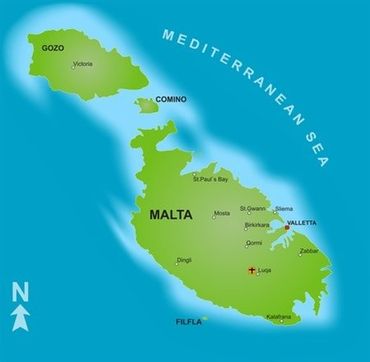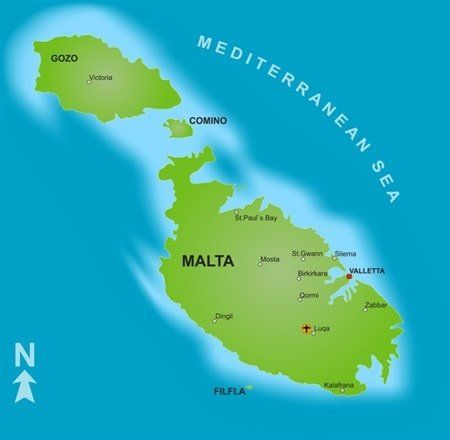History of the Maltese Dog
Overview
Where did the Maltese come from and what are its origins?
The Maltese breed has existed for at least 29 centuries. Dating back so far has caused a bit of debate as to the exact origin of this dog.
If you look far back, long ago descendants are thought to be Spitz-type dogs, possibly from Sweden.
Another possible ancestor is the Tibetan Terrier from ancient Asia.
Both theorized ancestors are much larger dogs. So, like most of the toy breeds that you see today, centuries of development bred the dog down in size, and no doubt refined the coat color to white.
No matter his ancient descendants, evidence shows that the Maltese breed most definitely became abundant on the Island of Malta. This is a small, beautiful isle off the coast of Italy.
As you have probably guessed the name 'Maltese' was derived from Malta.
Former names for the Maltese include the Roman Ladies Dog and Maltese Lion Dog. In addition, Malta used to be called Melita, and the Maltese carried this name for a while.
The Move into Europe & Egypt
Once this breed was established in Malta, historians speculate that trading is what prompted the spread of the Maltese dog into other areas of the world.
As traders began to bring the dogs into Europe, their popularity increased. Once the Maltese breed made his way into Egypt, the Maltese truly ruled.
Hieroglyphics show us that in Egypt, harem women were given Maltese dogs as companions. This breed was believed to have the power of healing. Ancient Egyptians would place a Maltese puppy in the area in which they slept, with the belief that would then have their health restored overnight.
The Move into Britain
Maltese history shows us that during the 1500's, the breed made its way into Britain. By this time, the standard color
of white was starting to be seen; though not for all Maltese dogs.
Throughout the centuries, queens had been known for taking quite a liking to smaller breeds and then spoiling them; the Maltese was no different. Queens of England pronounced the Maltese breed to be of royalty and they were certainly treated as so. They were give only the highest quality human food and luxurious sleeping areas.
Owning a Maltese was a symbol of stature and importance. During this time, only the wealthiest could afford to have this breed.
During the 1600's and 1700's there are a few records showing some events in this breed's timeline. There was a notable decrease in size
and build, with a notation that Maltese were about equal in size to a squirrel.
It was during these centuries that some believe that this breed was developed further and refined by mixing light colored Poodles and, perhaps, miniature Spaniels; although one can only theorize as to the exact breeds involved.
It should be noted that the lemon and tan markings that a Maltese can hold are thought to be due to Poodle color genes.
As the end of the 18th century came about, there was still a lot of work to do. There may have been up to 9 variations of the Maltese breed; therefore, a set standard was a lofty goal at that time.
Though one might assume that the Maltese at least always had some
amount of white in the coat, both parti (two colors) and solid colors other than white were accepted in the show ring up until 1913 in England, and possibly up until 1950 in Australia. Though, at this time there were two separate varieties; white and non-white.
The Move into the United States & Popularity
In the 1800's the Maltese finally reached the United States. This dog's popularity spread very quickly, and by 1888 the Maltese was accepted by the AKC. This was the same year that 6 other breeds were accepted: the Airedale Terrier, Dalmatian, Japanese Chin, Old English Sheepdog, Pomeranian, and the Welsh Terrier.
The Maltese is still a popular dog breed; however, admittedly has fallen in rank somewhat during the 2000's.
In 2006 he was at #18.
In 2007 he was at #19.
In 2008 he was at #21.
In 2012 he was at #25
In 2013 he was at #27
The latest figures from the FCI (Fédération Cynologique Internationale) show him at #20.
We are lucky that the Maltese breed was strong enough to evolve from a small grouping that was separated from other countries. Fortunately, the bloodlines persevered and all of us have the opportunity to own this amazing toy dog.

-min-450x169-480w.jpg)




